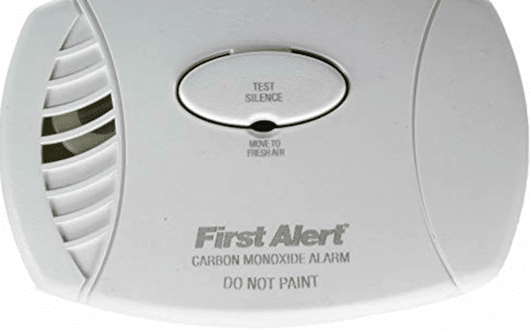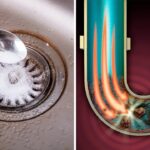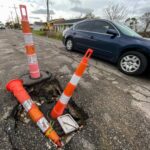Carbon Monoxide Detector for Electric Homes, Your home may be all-electric with no gas appliance to worry you of a possible leak of carbon monoxide. But do you think you need a carbon monoxide detector? Yes, you still need the device in your house to monitor carbon monoxide in the air to ensure safety for you and your family.
Carbon monoxide is a silent killer gas completely undetected due to its odorless property. It is colorless and doesn’t have a smell. As a result, it will poison and kill you without your knowledge. That is why installing a carbon detector in your house is crucial.
We uncover the details of the subject, and if you want to learn more about this life-saving device, you’ve come to the right.
Table of Contents
Do I Need A Carbon Monoxide Detector In An All-Electric House?
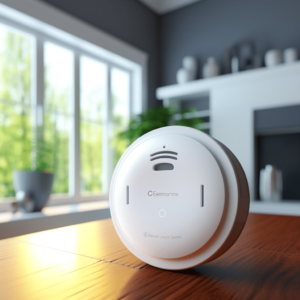
To monitor the air circulating inside your house, you need to install at least one carbon monoxide detector for emergencies that could formulate CO.
Secondly, you need a CO detector to secure your family and the entire building. Investing in an all-electric house is a costly investment that you wouldn’t risk dying before enjoying your sweat and hard labor.
The carbon monoxide gas might come from unwanted circumstances like a third party using something that produces carbon monoxide in your absence. Thus jeopardizing the life of those you leave behind. The solution is to install a CO detector to handle such a situation.
Carbon monoxide detectors are inexpensive. Therefore, failure to install it in your all-electric house results from negligence and not issues of affordability because you’re able.
In summary, Carbon Monoxide gas is a deadly gas that kills unexpectedly because of its characteristics as odorless, odorless, and colorless. That is why it is important to install the CO device to help you troubleshoot the danger on time.
What Sources Can Produce CO in an Electric House?
Unlike other houses, an “all-electric house” means everything used inside is powered by electricity. From kitchen appliances such as cookers, heaters, water heaters, toasters, and all other things, a clear sign is that they don’t produce carbon monoxide.
Does that mean all is safe? No. Carbon monoxide is not heavier than air. As a result, air carries it anywhere. That means CO gas enters the house from other sources that are not within the house, such as:
Car engine left open for long duration leads to accumulation of CO gas inside the house till it saturates posing a danger to the people inside the house
A parked car with exhaust pipe problems near the house with the engine runs may lead to carbon monoxide in the house.
Other Causes of Carbon Monoxide in All-Electric Houses
Wood burning fireplaces– Tops the list as the leading cause of carbon monoxide gas inside the house. So if your house has a wood-burning fireplace despite being electric, thus you need a CO detector device.
Garages- your house may be closer to a garage, meaning there are high chances of Carbon escaping into the house, except for an electric car. It would help if you opened the window as wide as the car engine.
A propane grill on an enclosed deck
Are There Benefits Of Having Carbon Monoxide Devices In An All-Electric House?
The CO detectors help you monitor the air inside the house and warn you when there is carbon monoxide. Therefore, have one installed in your electric house.
Carbon monoxide is a silent- killer; hence it is important to seek safety by the warning.
The only way to ensure carbon monoxide’s presence is to install a device detector to warn you of excessive carbon monoxide in the house.
What is Carbon Monoxide?
A colorless, unseen, and odorless gas refers to “carbon monoxide” when in and continues to suck oxygen from inhalation. It binds with the red blood hemoglobin. Nevertheless, you are not supposed to breathe in as it affects your health and leads to possible death in a blink of an eye.
A Glance of Some Co Facts
- Carbon monoxide is available in the air.
- High levels can be dangerous, which happens when you’re burning wood.
- It is a by-product developed from combustion hydrocarbon fuels such as propane, gasoline, natural gas and coal.
Signs of Carbon Monoxide Poisoning
- Headache
- Nausea
- Weakness
- Confusion
You experience these signs, get to a well-ventilated space, and open the windows to avoid losing consciousness.
Types of CO Detectors
Carbon Monoxide Detector for Electric Homes find carbon detectors plugged in or hardwired. Also, there are CO detectors that detect smoke together with CO. For the hardwired designs, you connect them to the power source but also have batteries as a backup when power is off. Its monitors are intertwined in that when one is triggered, they all respond.
Standard CO detectors consist of lights that indicate different alarms, while others give a digital readout- showing CO level throughout.
5 Maintenance Tips Carbon Monoxide Detectors
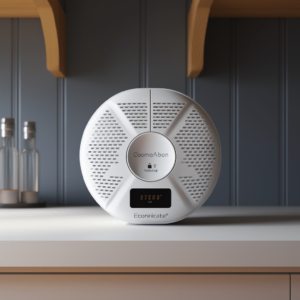
The best way to be safe and protect your home from the leading killer gas is through CO detector installation. However, to get the best out of the device, do the following:
Regularly change the batteries- Change the battery annually to ensure effectiveness in case there is CO in the room
Keep it clean- these devices require cleaning as they accumulate dust over time. As a result, you improve their performance.
Test regularly- They have a testing button that enables you to test its alarm which gets done annually to verify its performance.
Make sure you have enough- If the size of your house is big, it has to be fully protected. Therefore install detectors on each floor for maximum coverage.
Carbon Monoxide Detector for Electric Homes have detectors installed, consider installing one even though you don’t use gas appliances. With an attached garage, carbon monoxide can seep into the house through the ground.
Carbon poisoning can be fatal; hence, installing a carbon monoxide detector is advisable to take all the necessary measures to keep you safe. Contact a professional for help with the installation procedure.
